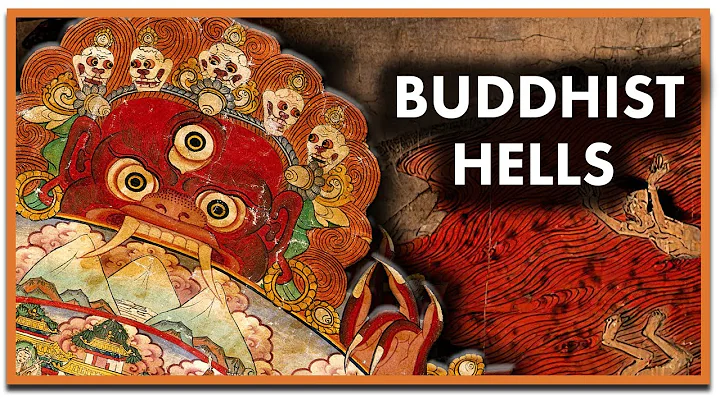In Buddhism, , the four great bodhisattvas refer to the four bodhisattvas of great wisdom Manjushri Bodhisattva, the great compassionate Guanyin Bodhisattva, the great practice , Samantabhadra Bodhisattva , and the great vow Ksitigarbha Bodhisattva .

Bodhisattva is the transliteration of ancient Indian language, meaning the master, which means the one who makes great wishes. The Bodhisattva vowed: "Use wisdom to seek Buddhahood and to transform sentient beings with compassion. A merciful person who does not seek happiness for himself, but hopes that all sentient beings can be free from suffering. The status of Bodhisattva is second only to that of Buddha, and is higher than that of Arhat .
Wisdom, compassion, action, and wish are the symbols of the four great bodhisattvas in Mahayana Buddhism . Manjushri represents wisdom, Guanyin represents compassion, Samantabhadra represents practice, and Ksitigarbha represents vows.
But why are the four great Bodhisattvas named "compassion, action, wisdom, and wish"? Let’s explain it to you one by one.
1. Great Compassionate Avalokitesvara Bodhisattva

Guanyin is a great compassionate Bodhisattva, who can manifest the thirty-three incarnations and save twelve great disasters. Because he advocates saving sentient beings according to his kindness, regardless of the noble, humble, wise and foolish, he is called "Avalokitesvara Bodhisattva who saves suffering and distress".
The name of Guanyin contains the merits and thoughts of Bodhisattvas who are compassionate and compassionate to save the world. According to the Lotus Sutra, "If countless hundreds of thousands and millions of sentient beings suffer from all sufferings, they hear that it is Guanyin Bodhisattva , and they call it one heart, and Guanyin Bodhisattva immediately observes his voice and all of them will be liberated.
Guanyin Bodhisattva 's "compassion" and "compassion" are not what we call charity, compassion, and sympathy, but a professional Buddhist term. Instead, "relieve suffering and gain happiness", "compassion" means bringing benefits and happiness to others; "compassion" is Refers to eliminating the unfavorable and sadness in the hearts of others. Loving sentient beings and giving happiness (and joy) is called compassion; feeling the same pain, pitying sentient beings, and removing their suffering (and eliminating suffering) is called compassion; the two are collectively called compassion. It also means giving the causes of happiness and happiness to all sentient beings, and saving them from the causes of suffering and suffering.
2. Great practice Samantabhadra Bodhisattva

0 Great practice universal Virtuous Bodhisattva, "action" is generally read as "xing" and "exercise" to make two sounds. However, "action" should be read as "heng" to make four sounds, and it is difficult to do it.
Samantabhadra Bodhisattva is famous for his great practice. "action" means behavior, action, and has the meaning of practice; Samantabhadra Bodhisattva practices the great Bodhisattva path that seeks supreme Buddhahood with wisdom and transforms countless sentient beings with compassion, so it is called great practice.
"Samantabhadra Bodhisattva" The great practice thoughts of Samantabhadra Bodhisattva in the Chapter of Practice and Vows are the core content of the Avatamsaka Sutra, and the ten great practices and vows of Samantabhadra Bodhisattva are the essence of the Chapter of Practice and Vows of Samantabhadra. The ten great practices and vows of Samantabhadra Bodhisattva are:
(1) to pay homage to all Buddhas, (2) to praise Tathagata , (3) to practice and offer extensively, (4) to repent to karma, (5) to rejoice in merits, (6) to turn the Dharma wheel, (7) to invite Buddha to live in the world, (8) to always follow Buddhism, (9) Always follow all living beings, (10) All dedication.
The boy Shancai has studied fifty-three good teachers, and later met Samantabhadra Bodhisattva and asked to explain to him "a drop of the Buddha's merit sea". Samantabhadra Bodhisattva then said to Shancai and all the Bodhisattvas in the Dharma Assembly that if you want to achieve the merits of the Tathagata, you should practice ten great wishes.
3. Great wisdom Manjushri Bodhisattva

It is said that Manjushri Bodhisattva has taught seven Buddhas in the past (not the past in the traditional sense, but the past life corresponding to the present and future), and even Sakyamuni Buddha was enlightened by Manjushri Bodhisattva. From this we can see that Manjushri Bodhisattva is actually the greatest wise man in the three realms.
Therefore, Manjushri Bodhisattva was named "Great Wisdom". Because he had taught the Buddha, he was respected as "Prince of Manjushri Dharma".
In Buddhism, wisdom and wisdom are two different concepts.
The so-called "wisdom" is originally meant to illuminate the darkness of the world, and is synonymous with all correct thinking. On the basis of "precepts" and "samadhi", the light of wisdom of practitioners is as transparent as candlelight, which is "wisdom".
4. Great vows Ksitigarbha Bodhisattva

Ksitigarbha Bodhisattva was ordered by the Buddha in the Sakyamuni Buddhist Assembly.In the Dharma-Ending Age after the Buddha's death, sentient beings had dull roots and deep troubles, few people practiced and realized enlightenment, and many people fell into depravity. Ksitigarbha Bodhisattva made great vows in the endless kalpas, so he shouldered this responsibility in front of the Buddha.
Ksitigarbha Bodhisattva made a vow to save sentient beings from suffering and evil realms. Among the sentient beings in the evil realm, the sentient beings in hell are the most suffering. Bodhisattvas are particularly compassionate and compassionate to the suffering beings, so they are particularly important than the salvation of hell.







![[English] Who Am I - Lecture 1 - Ven. Guan Cheng - DayDayNews](https://i.ytimg.com/vi/KU0fUs2It5o/hq720.jpg?sqp=-oaymwEcCNAFEJQDSFXyq4qpAw4IARUAAIhCGAFwAcABBg==&rs=AOn4CLDFpQUN_QwRfC7bmP4sUadq-RcYdg)
![A Moving Masterpiece 清明上河图 [English narration] - DayDayNews](https://i.ytimg.com/vi/kxff-4GktOI/hqdefault.jpg?sqp=-oaymwEcCOADEI4CSFXyq4qpAw4IARUAAIhCGAFwAcABBg==&rs=AOn4CLBtHGLeUpJNCYDJYnZTuISQ1N5Vag)


